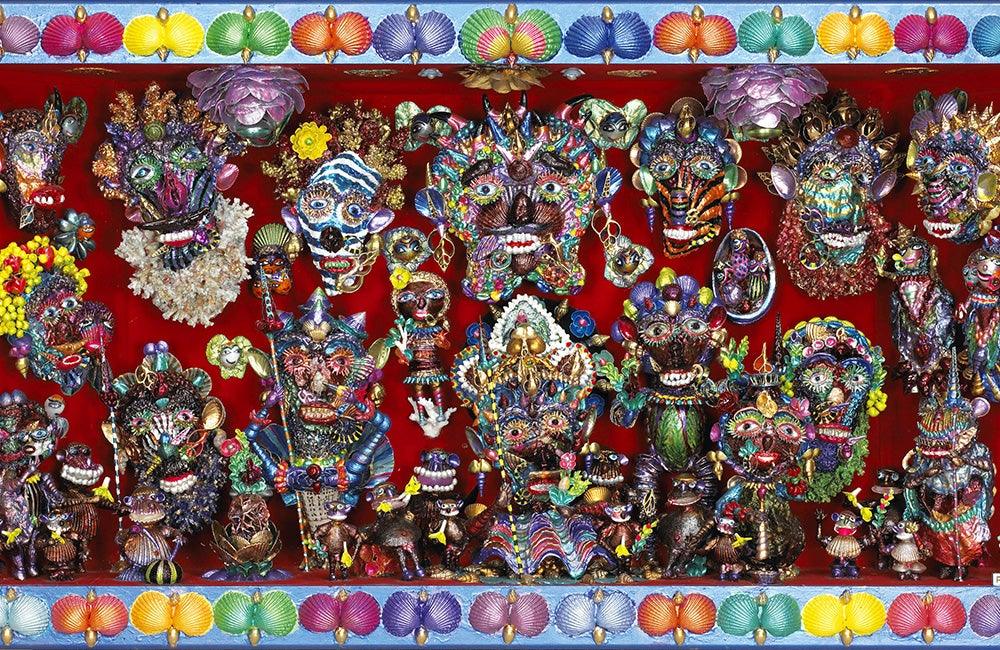First published: Winter 2009
Using shells as his main material, Algerian-born Paul Amar has produced more than 200 exuberant pieces, each one of them of unprecedented richness and sophistication. Picked up on beaches or bought in from fishmongers' or other specialist shops, the shells are ground smooth, cut to shape, assembled and then varnished and heavily painted in a frenzied fusion of glorious golds and outrageous colours to create cleverly orchestrated tableaux.

Paul's wife, Rose, thinks he has delusions of grandeur. His works occupy the whole space on all four walls of every room in the Amars' apartment, each piece individually lit and placed at the ideal height for display. 'They must all be 1.3 metres high', explains Paul, 'or they don't look right.' Paul uses the Algerian word 'yaouled' to describe the small sculptures of people, animals, flowers and decorative elements that he builds in series and installs in his large tableaux. During the colonial era, 'yaouled' was the name given to the ragged children of the underclass who lived and worked on the streets. Seen as worthless and violent individuals who had identity problems, they lived in notorious shanty towns and hung about on the pavements of the capital.
Paul often says that his 'whatsits' are as crazy as he is. He is meticulous about detail, removing teeth from some of his figures, emphasising hunched backs and adding facial disfigurements, boils, warts and scars. He compounds the effect with earrings and nose-rings, outrageous make-up, and sometimes obscene gestures or poses. Paul Amar's imaginary 'court of miracles' pays homage to the notorious locales of his childhood.
The 'yaouleds' participated enthusiastically in the anti-colonial revolts, joining in the demonstrations that took place in Tunisia in 1952, the riots and their suppression in Casablanca, and the battle of Algiers in 1957. Regarded as louts and shameful creatures by the press of the time, they were the forgotten children of the history of decolonisation. It is the flame of notoriety that burns beneath these fabulous rags that Paul celebrates in his work.
Paul loved his job as a taxi driver in Algiers with a passion. 'It paid well', he recalls. 'I had my regular clients. I carried American tourists who came off the boats, as well as hookers and pimps. I loved the atmosphere. You could say that I specialised in carrying prostitutes.' Before independence, the port of Algiers was very busy, commerce flourished, and a score of brothels operated in amicable rivalry. Paul was a trusted chauffeur for the pimps, and his friendship with the women concealed no hidden motive.
When the Amars' children Jackie and Richard were born, Rose was showered with gifts. 'May their souls rest in peace, if they are no longer of this world' says Paul. 'Rosie and I loved the whores' he adds. Clearly Paul's work conveys something of the glittering wealth of the luxurious brothels he visited. 'You should have seen how beautiful they were' he reminisces. 'Armchairs everywhere. Stained glass. Magnificent bars. There were Muslims, Jews, Christians, girls from Italy and Greece. Nobody took any notice of anyone else's religion.' Unwittingly, Paul was absorbing the subtle traits that would later form part of the human drama of his tableaux.
This is an article extract; read the full article in Raw Vision #68




